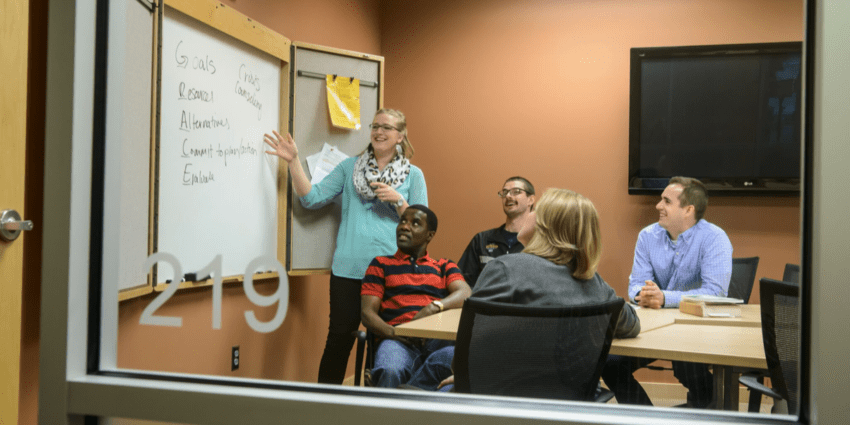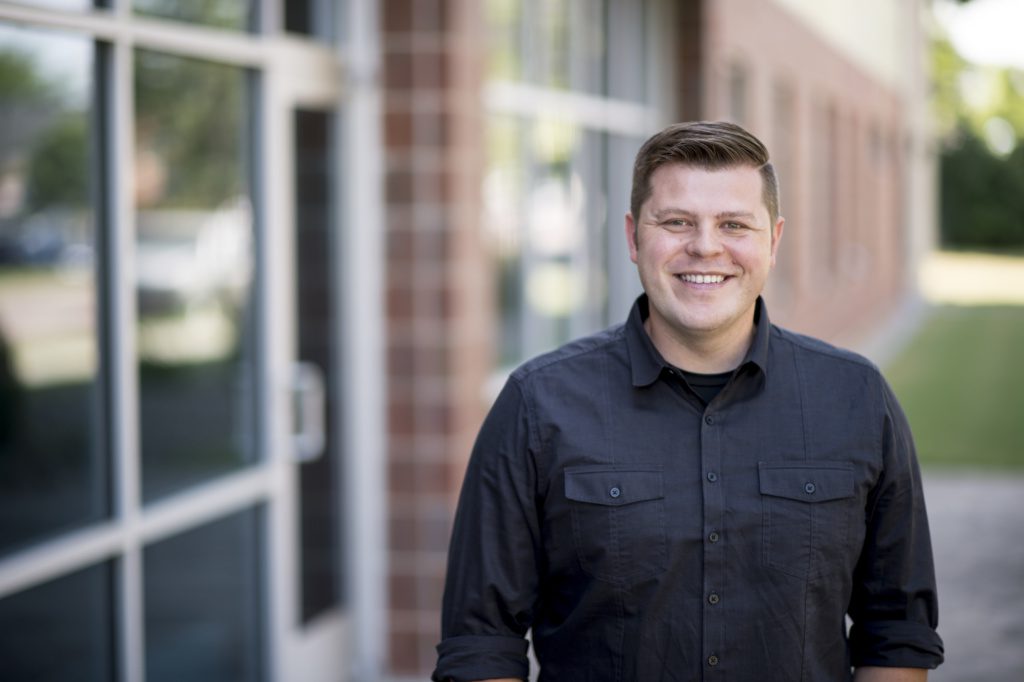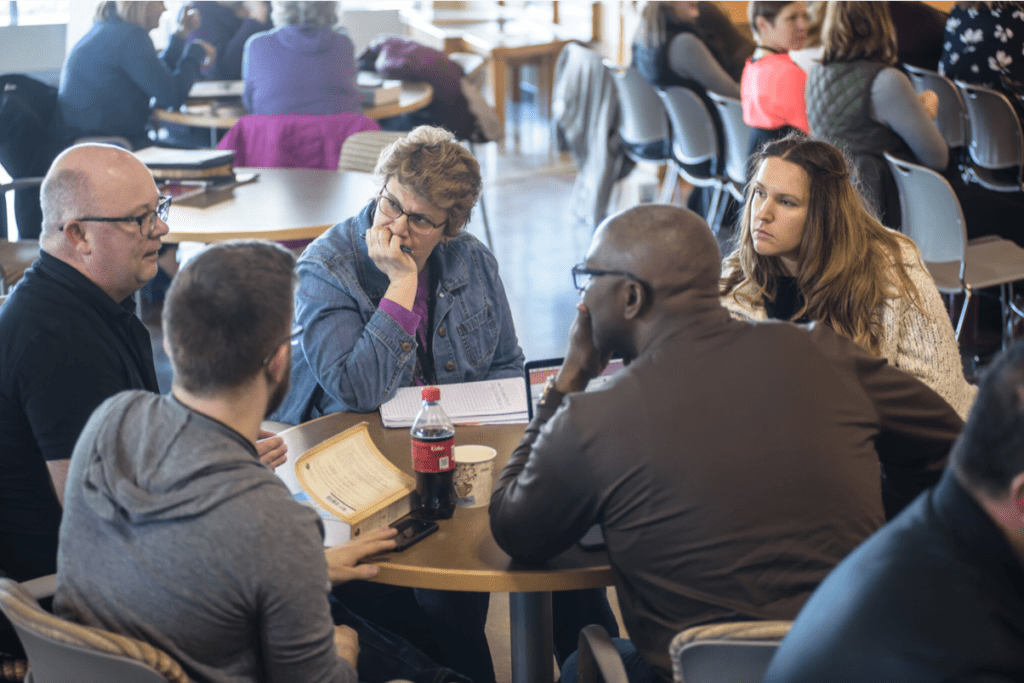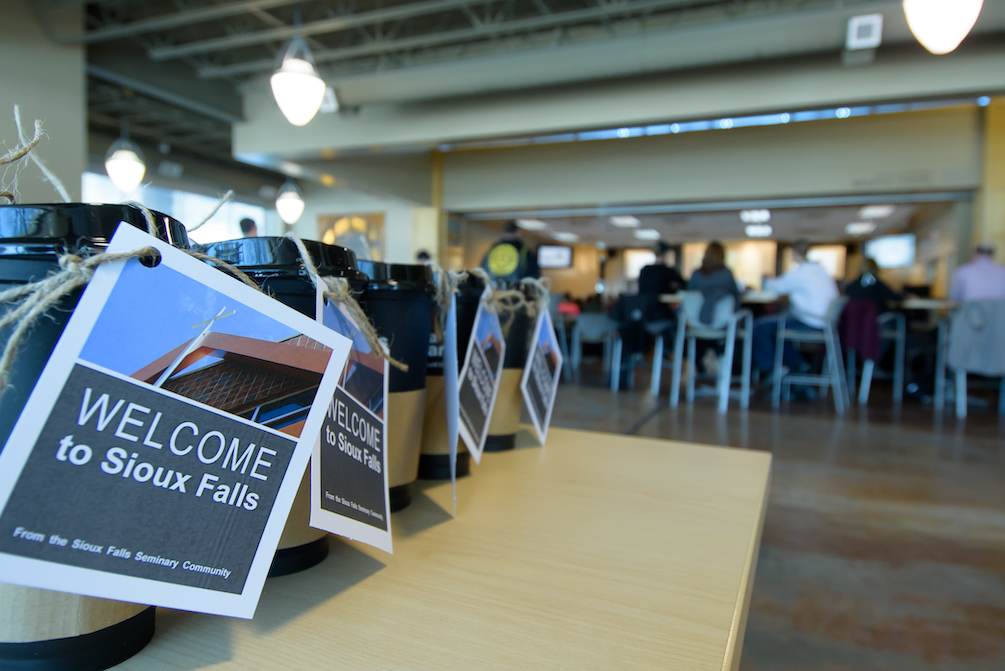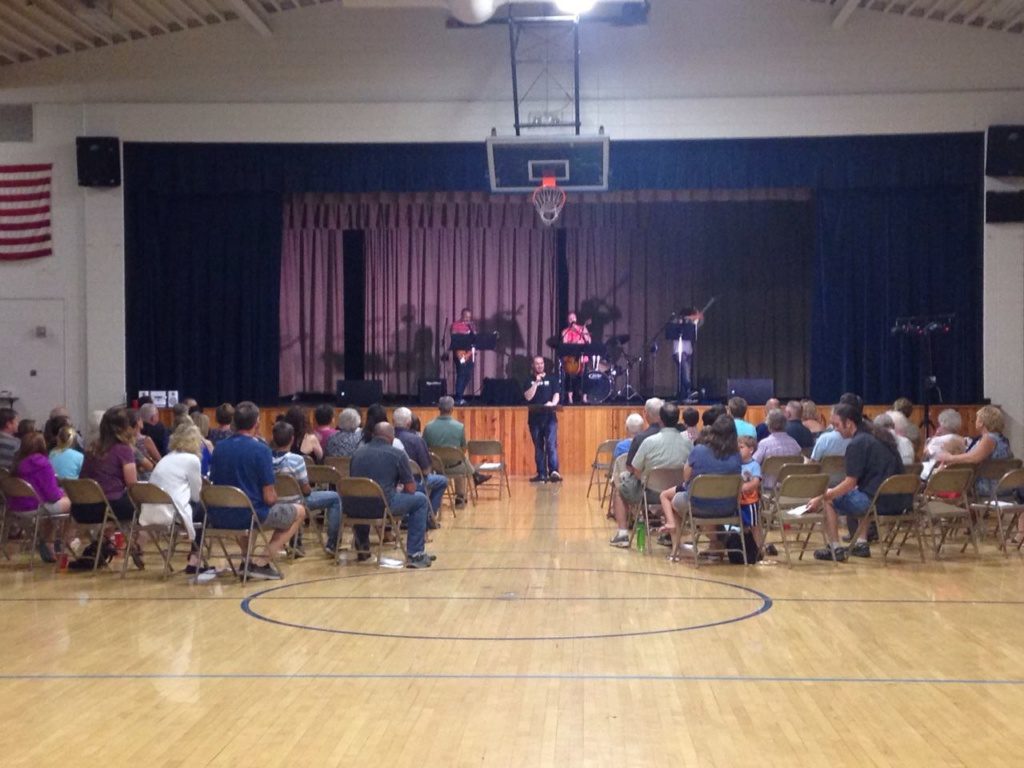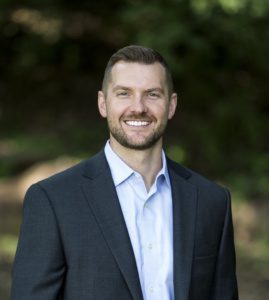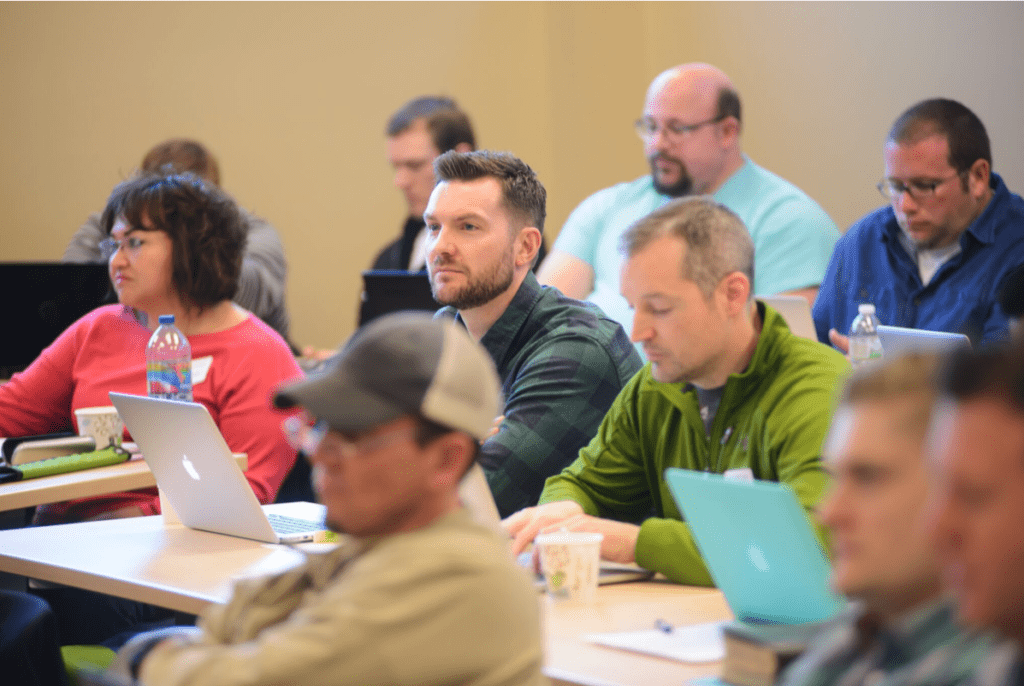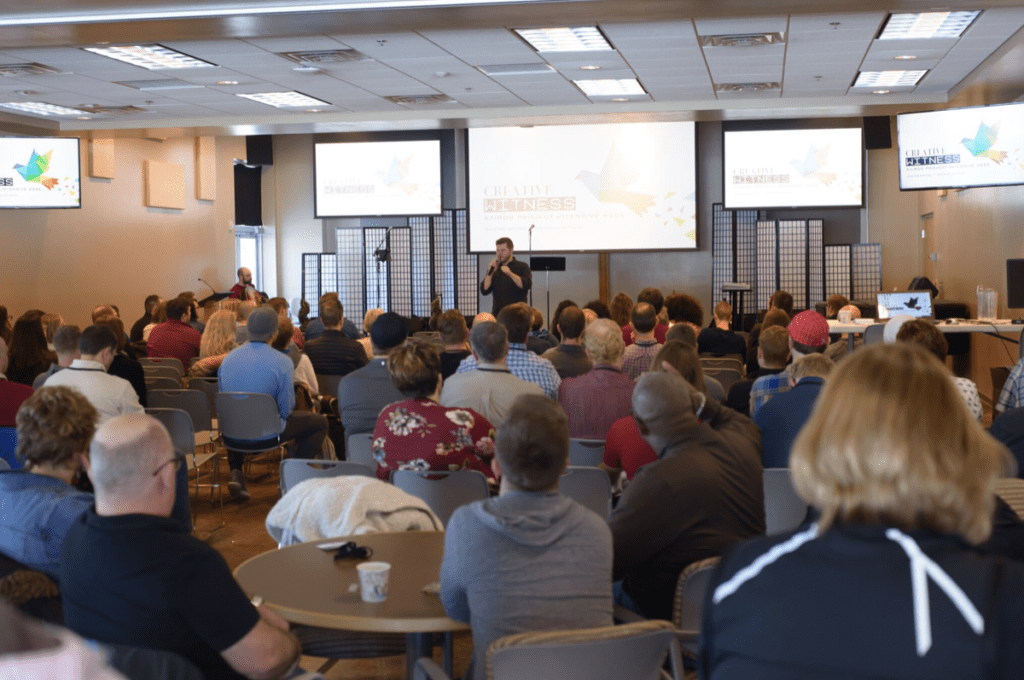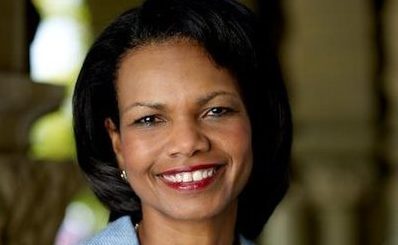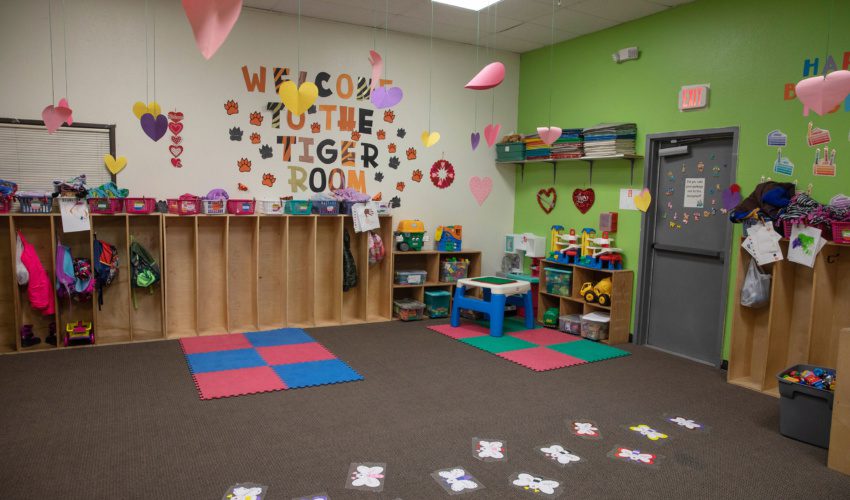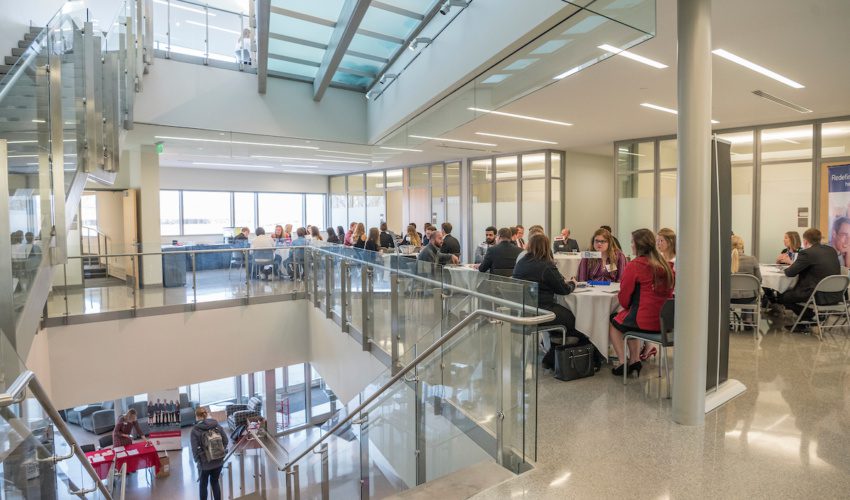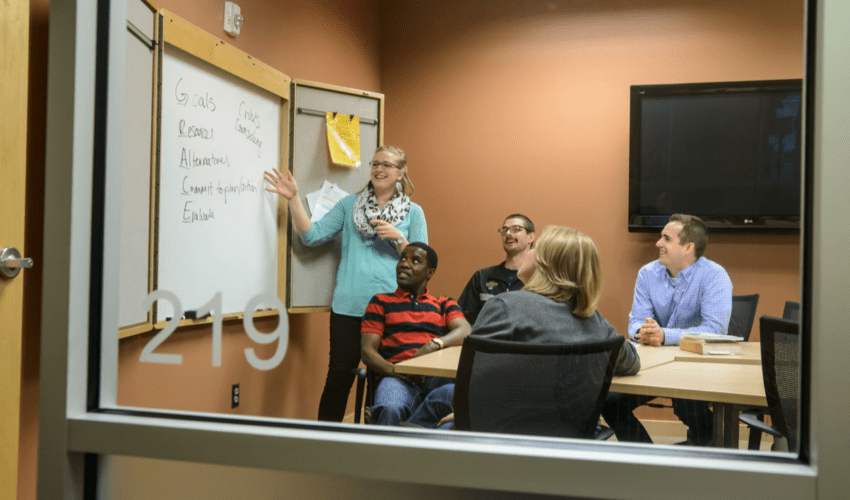‘Like a 165-year-old startup’: Sioux Falls Seminary’s turnaround driven by innovation
Jan. 14, 2019
About five years ago, Sioux Falls Seminary was facing the same story line as many institutions of its kind.
As enrollment dropped industrywide for a decade, the Sioux Falls school saw its numbers go up and down.
The financial picture was equally unsteady, with deficit and surplus years.
The cost of an education was $599 per credit, meaning a degree was as much as $50,000 plus fees.
At one point in the seminary’s history, there were 200 full-time students living on the central Sioux Falls campus. By 2013, that had dropped to 150 and most were part time.
“I talk about 2013 being the best and worst year in the life of this organization,” said Nate Helling, CFO and vice president of operations.
“We’re 165 years old, but we really came to a point where we had to do something different or not exist.”
That something different came in the form of Greg Henson, who was named the seminary’s president at age 31, making him one of the youngest people to ever be named head of a U.S. seminary.
“Greg was asking questions other people weren’t asking,” Helling said. “If you spend any time around education, you’ll realize we’re slow to change, and we do a lot of things because we’ve always done it that way.”
Next-generation leader
Henson, a Chicago native, was working for a seminary there leading enrollment, marketing and — most critically, innovation.
He started speaking at events for seminaries and got an email from the search committee in Sioux Falls that he had been nominated for the presidency.
“I was excited,” Henson said. “Not to overspiritualize it, but throughout the interview process my wife and I felt very called to be here. One of the reasons we wanted to come was because we discerned the faculty and staff and board really were interested in doing something new. It was like a 165-year-old startup, which is why I said yes.”
Henson’s approach is grounded in what he calls integrated innovation. Most organizations approach innovation in silos, he explained, like product innovation or – in the case of schools – starting “a cool new program.”
“But most research says if you segment innovation that way, it usually fails,” he said. “You have to start thinking about product and finance and operations in one package. You can’t, as a seminary, separate how you staff and operate your organization from how you develop students. It has to be wholly integrated.”
The model of higher education, he contends, is “fundamentally flawed,” and seminaries are among the most obvious examples of it.
“All your costs are fixed – people and buildings. Part of what I did (at the previous seminary) was develop a financial model that showed we could grow by 30 percent and we’d still be running a deficit because of the way the system functions. It’s not designed to be efficient.”
Five years after Henson took over, almost everything about the school has changed.
Enrollment has grown from 150 to 350 students.
The tuition that once exceeded $50,000 for a degree has been cut to an average of $10,800.
And the annual deficit, which once exceeded $800,000, has been erased.
Here’s how they did it.
Creating Kairos
The foundation of Sioux Falls Seminary now is an approach dubbed Kairos, which is Greek for moments in time.
“It’s the idea of shifting the focus of education from chronological time to moments in time that naturally encourage integrated learning,” Henson said. “If you make that philosophical shift toward moments in rather than chronology, everything changes.”
The credit hour – the foundation of most higher education models – “no longer becomes the coin of the realm,” he continued, likening the alternative to something more like Netflix for higher education.
With Kairos, the cost is $300 each month until graduation. The only fee is for a diploma and gown at graduation. Students can take as many or as few courses as they want, and they pay until they’re done.
And the coursework changed considerably. The seminary still offers traditional classes, delivered in person and online, but it’s now an outcome-based approach to education. That means students have a set number of outcomes where they need to demonstrate competency in return for credit.
“Your job is to fill the bucket with learning resources and experiences,” Henson said. “So you might take a traditional course. You might read and write blog posts as a learning experience. The delivery model has shifted from everybody sitting in a class to everybody gets a mentor team of three people that help that student customize their learning journey.”
The approach demands being “really good at assessing people,” he acknowledged. “You have to get really good at defining what you’re measuring and how you’re measuring it.”
The seminary has five full-time faculty members who receive salary and benefits, and there are more than 30 nontraditional faculty members nationwide who are mostly paid per student, per month.
As part of the transition, the seminary also reduced its full-time equivalent staff, evaluating roles based on tasks that needed to be done rather than positions that needed to be filled.
Many functions, including back-end office and IT, were outsourced.
“If it doesn’t add value to the relationship with students, we try not to have our staff doing it,” Henson said. “And the faculty can no longer just teach classes. They all have to know a lot more about the whole organization. They have to be aware of the financial model.”
While the amount of tuition revenue decreased short term, it’s now on its way back toward where it was when Henson took over. Revenue from the seminary’s efficiency improvements and growth at Sioux Falls Psychological Services, which it also owns and operates out of its main office, helped supplement the dip in tuition revenue.
Student response
Sioux Falls Seminary handpicked the first 15 students to go through the Kairos Project in the fall of 2014.
“And they were outstanding,” Helling said. “And they told people.”
Tyler Ramsbey started classes in the fall of 2015. The lead pastor at Renovation Church in Garretson, he had an undergraduate business degree but had found seminary school cost-prohibitive.
“Usually, it’s an unwise decision to go into debt and not make much when you graduate,” he said. “But it was only $300 a month, which is super affordable for graduate education, so I figured I had nothing to lose.”
Three years later, he had earned a Master of Divinity, using a hybrid approach of taking classes in person and online, and doing contextual work in his ministry with independent study.
Assignments were adapted to fit what he was working on in his church at the time. For instance, while working on a leadership outcome for his degree, he was transitioning the church’s name, and creating a budget and bylaws.
“So I documented all that and used it as an assignment,” he said. “I used my leadership ability to make it happen, so I was able to use what I was doing in ministry.”
His mentors were especially valuable, he said.
“The problem with theological education is you have a bunch of students, they take tests, and if they get good grades, they get a degree,” Ramsbey said. “In ministry, you need a lot of people looking at you. You may be really good at tests, but your personal mentor could say you’re kind of arrogant and need to work on that. It’s a more comprehensive look at you as an individual.”
As a pastor in a small community, those ongoing relationships are critical, he added.
“I’m passionate about small towns, but the trouble with pastors in small towns is there’s often loneliness. It’s easy to become isolated, so the importance of mentors is something I took with me.”
He recently started working on his Doctor of Ministry.
“You really have to be a self-starter,” he added. “If you’re used to the traditional way of education where a teacher follows up with you constantly, you won’t get it done. I love it because I had so much freedom.”
People nationwide regularly message him on Facebook to ask about the program, he said. And that’s becoming the norm for Sioux Falls Seminary.
Word has spread in a way uncommon to seminaries, Henson said. The school has done little marketing.
“The majority of students enroll in seminary because someone they know told them to,” Henson said. “What’s happening with Kairos is not normal because it’s not localized. It’s on four continents. It’s all these denominations. It’s still word of mouth, but it’s hyper-accelerated. We’re starting to get a growing number of students who find out about us from what other people are saying about us online.”
The seminary offers the following degrees:
- Doctor of Ministry.
- Master of Divinity.
- Master of Arts in Counseling.
- Master of Arts in Christian Leadership.
- Master of Arts — Bible and Theology.
“We don’t sell degrees,” Henson said. “We invite people on a journey of development, a journey of discipleship.”
While the approach might be nontraditional, the seminary is accredited by the Higher Learning Commission and The Association of Theological Schools.
“All our assessment data for accreditors shows the graduates of this approach are of higher quality than previous graduates,” Henson said.
“They are as competent as our previous graduates in traditional areas. They excel in three particular areas: They are more self-aware, they are better able to participate in a faith community, and they know how to live a mentored life, which are three really important things for anybody whether you’re in ministry or not.”
Sioux Falls Realtor Tyler Goff is among those in other professions attending the seminary. He started his Master of Divinity in the fall of 2015 and estimates he has about a year left.
“What sold me on the program was I am able to do it without completely disrupting my everyday life. We have four kids, I have a full-time career, and I had to be able to do school in a way that did not disrupt those two areas of life,” he said.
“Since my career is not in ministry, we have been able to tailor a good portion of the assignments to fit my career.”
For instance, instead of completing an assignment that involved a message to a church congregation, he was able to use messages he delivered to his real estate team. The ability to customize his learning and work at his own pace has been key, Goff said.
“Without a program like this, I would never have been able to go to seminary. Kairos made it possible for me to deepen my knowledge of my faith and still fulfill my duties at home and in my career,” he said.
The biggest impact he has experienced has been viewing his career as his ministry, he added.
“It has changed the way I lead, it’s changed the way I run my business, and it’s completely changed how I view my job. It’s changed my career into my calling,” Goff said.
“The schoolwork and the classroom time were great, and I learned so much. But the real benefit of this program is the connections made with other people that have a similar mind-set and outlook on life.”
Sioux Falls Seminary is preparing for a continued influx of similar students. One of its fastest-growing demographics is non-vocational students who are seeking the personal and professional development of a seminary education.
“They’re Christians who are trying to figure out how to be better at what they do every day and understand how that connects to their faith,” Henson said. “You have people who are lawyers and love Jesus and are trying to figure out how those two things go together.”
To accommodate the demand, the seminary is evaluating its physical space needs, honing the software it uses to deliver remote education and is in the process of raising capital to accelerate its growth.
There’s also growing interest from undergraduate institutions in partnerships, others asking about offering the program in different languages and a growing Kairos development network that harnesses resources from other seminaries and ministry organizations.
“And we care about what it means to be in Sioux Falls as a participant in the city, not just located in the city,” Henson added. “We’re always trying to figure out if there are ways the seminary can work within the context of the city in areas the city has identified needs.”
They also offer plenty of help to other schools and organizations trying to replicate some of what they have achieved.
“No one is doing what we’re doing, integrating the traditional and nontraditional models,” Henson said. “There are about 20 seminaries that have grown steadily in the last five years, and some that could rival us in percent of growth, but there are none that can take that growth in students and also show a wholesale financial shift.”

